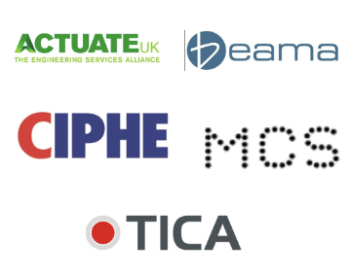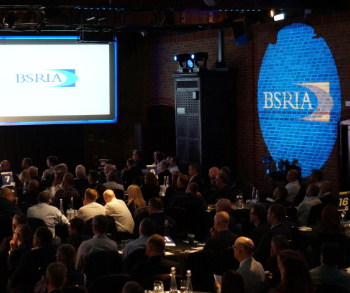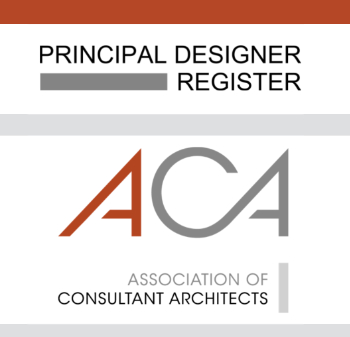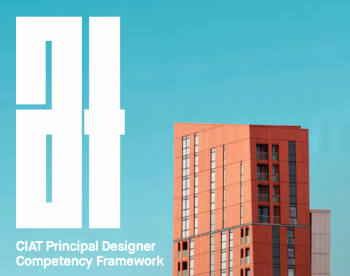Managing risk and driving innovation with BREEAM
Contents |
[edit] Introduction
What is Innovation? Well, for this article I will use a standard definition and say that it refers to incremental and emergent, or radical and revolutionary changes in thinking, products, processes, or organisations.
The goal of innovation is positive change, to make something better, but striving for that goal also brings with it a level of risk. Arguably, our customer’s buildings are not the best test-bed for radical or revolutionary changes. Budgets are estimated, margins are tight, delivery can be fragmented, site conditions are changeable, and the client wants to be finished by Christmas!
Despite some great examples of best practice in design, procurement and methods of delivery, the nature of construction tends to be one of technological uncertainty. That’s a big part of the reason why many construction contracts have large indemnity and retention clauses and stage payments. Until the shovels go in the ground we’re never 100% sure what we might come up against and need to overcome. That uncertainty is a double-edge sword. It can be a risk that restrains or acts as a driver of innovative behaviour and solutions, often without realising it.
[edit] Innovation is good if it is scalable, and you may be doing it without realising
I want to mention research and development (R&D) in construction. R&D is about taking a risk whilst trying to resolve known scientific or technological uncertainties. Now, take a look at HMRC statistics on R&D tax credits by industry sector. The data shows that construction accounts for only 3% of the number of claims and only 2% of the £3.3 billion claimed.
Those seem like small numbers for an industry that makes-up 7% of the UK economy, employs 10% of its workforce and faces daily technological challenges, which it often overcomes. It would be easy to conclude that the construction industry doesn’t do enough research and development, and that may be the case, but the view is that many companies in the sector are unaware of its scope, at least when it comes to applying for tax credits.
Research and development begins when work to resolve technological uncertainty starts. This could be during the design phase of a project or triggered by a problem encountered on-site, for which a technological solution is required. These uncertainties, or risks, will be driven by several different factors, one of which is likely to be BREEAM.
For example, the building sustainability team at Sweco, who were the assessors and consultants on Bloomberg’s new European Headquarters in London, used BREEAM as a framework for pooling ideas and knowledge alongside shared aims.
Coupled with a strong sustainability brief from the client, the project’s use of BREEAM encouraged the team to consider a range of ‘what if’ scenarios involving a range of applications to address a technological challenge which the client’s brief and BREEAM’s application had posed.
This culminated in some innovative thinking and approaches, including a process of advanced lifecycle modelling that produced solutions that will deliver substantial operational water and energy cost savings to the client.
Many say that if it wasn’t a planning requirement they wouldn’t use BREEAM, as it’s just another risk to manage and cost to bear. But finding a solution to meet a BREEAM rating may be helping to give them an untapped competitive advantage. BREEAM is being used internationally, so using and innovating within such a framework has the potential to open up markets, which is good for UK PLC.
The take-home point here is two-fold. Given that construction has more than its fair share of uncertainty, it may be that you and your company are being more innovative than you realise. And in the process, you might be doing research and development that is eligible for tax credits.
[edit] A ‘safe’ playground and signpost to future regulation
Best practice standards offer a consistent and robust framework for industry and signpost for future regulatory issues. This can be highlighted through the example of the humble toilet cistern.
In 1986 a typical new cistern held 9 litres of water, that’s over 4 times the recommended minimum daily water intake for an adult. The following year, BRE demonstrated that a well-designed WC could operate effectively with as little as 3.5 litres. And in 1989, this demonstrator influenced a reduction in maximum flushing volumes to 7.5 litres for all new installations.
Seeing the potential to go beyond this, in 1991 BREEAM set a requirement in its new homes scheme for a 6 litre flush volume WC – at that time no UK manufacturer made a 6 litre flush toilet. Four years later, Ideal Standard became the first to supply a compliant fitting and other manufacturers rapidly followed. Another four years later saw the uptake of these more efficient systems become so widespread that 6 litres became a regulatory standard. Today, low flush WCs are ubiquitous and save millions of litres of water as a result.
BREEAM has and continues to act as a test bed for market adoption. As a result, thousands of clients, projects teams and stakeholders have innovated and delivered buildings that perform better than they otherwise would have or needed to.
Whilst BREEAM can recognise radical or revolutionary change, that is not its main purpose. As the example of the flushing cistern highlights, it is driven by supporting and encouraging incremental and emergent changes in thinking, products and processes. Providing a ‘safe’ playground in which to test ideas and feedback. In that respect the method does embrace innovation, doing so at a pace which by-in-large works for the mass market and helps clients to address and manage current and future risk.
[edit] ‘A sense of purpose’
Environmental, social and corporate governance is rapidly moving from just ‘another risk to be managed’, to a driver that is influencing company strategy for long term growth. Society is increasingly demanding that companies and their products and services serve a social purpose. Increasingly stakeholders, and more importantly shareholders, are not only measuring companies according to financial performance, but also how they make a positive societal contribution.
Each year Larry Fink, the CEO of Blackrock, a global investment management company with over 6 trillion dollars in assets under its management, writes to the CEO’s of the companies in which they invest directly or through an index fund.
In his 2018 letter Larry Fink challenged companies to think about their sense of purpose and how they are managing their impact on the environment.
“Today, our clients – who are your company’s owners – are asking you to demonstrate the leadership and clarity that will drive not only their own investment returns, but also the prosperity and security of their fellow citizens.“
Source: Extract from annual letter to CEOs by Larry Fink, Chairman and CEO, BlackRock, Inc
Blackrock are increasingly integrating and accounting for this ‘sense of purpose’ in their investment process. So, shareholders through their asset managers are making investment decisions based on long-term value and using environmental, social and corporate governance performance as a key measure of that.
This change is having a greater impact across and down the finance and PLC sectors. Whereas in the past and to a large degree currently, BREEAM has been driven by central Government procurement and planning policy, we are increasingly seeing it used for ESG rating purposes. And not just to tick a box but because BREEAM helps companies manage their risk and in turn support delivery of long term value for their customers.
[edit] A driver of assurance
The cornerstone of good assurance is a good standard and standards are easy to write, but hard to get right. BREEAM isn’t perfect, but as the market has matured so has the standard. And it’s a constant feedback loop. The standard evolves in response to the market and the market and solutions evolve in response to the standard.
Market transformation and innovation is one of the key drivers for assurance and therefore BREEAM certification. Third-party certification adds value because it gives customers and consumers’ confidence in claims about performance, it helps manage risk.
However, whilst BREEAM can play a part in creating the right conditions for innovation to occur, it can also get caught-up in and lead to bureaucracy. A good standard used properly removes levels of bureaucracy rather than adding to them, but like most things in life taking short-cuts increases risk, drives unintended consequence and leads to missed opportunities. Essentially this leads to the view that BREEAM is a box-ticking exercise.
In developing and applying BREEAM or other similar methods, both users and operators of such standards have to be wary of inadvertently becoming agents for inappropriate outcomes. One size, or rating requirement, does not fit all and that can create a conflict which focuses minds and efforts on risk mitigation rather than embracing the opportunity standards provide to collaborate and innovate to create a better building. A better building which to some might be the industry leading BREEAM Outstanding exemplar and to others is the budgetary or site restrained but no less hard fought and won BREEAM Good rating.
Many standards are not suitable for certification because they have woolly and subjective requirements, or they are driven to the level of the lowest product or service provider. In BREEAM we aim to strike a balance that provides flexibility and the right level of prescription to recognise different solutions, whilst providing the consistency to credibly measure and rate performance in a way that is meaningful to clients and the wider market.
Outcomes are ultimately driven and paid for by the client, so if the driver for sustainability isn’t coming from the client, or it is but it is being squeezed by a narrow or short-term focus, there will inevitably be conflict and a missed opportunity to create a better building.
I want BREEAM to facilitate and drive better outcomes for clients, building occupants and the environment. When it is fully embraced and used as a balanced score-card of quality and sustainability, certification to BREEAM, Home Quality Mark or CEEQUAL endorses good performance whether innovative or not, and dare I say it, helps tick the right box!
This article is based on a presentation given at the annual conference of the Alliance of Construction Networks in November 2018. It was written by Tim Bevan and originally published on 23 Nov 2018 at: http://brebuzz.net/2018/11/23/managing-risk-and-driving-innovation-with-breeam/
Tim is the director of operations for BREEAM at the BRE Group. With a background in construction, Tim has over 18 years experience developing and operating built environment assessment and certification schemes for UK and international clients.
--BRE Buzz
[edit] Related articles on Designing Buildings Wiki
Featured articles and news
Twas the site before Christmas...
A rhyme for the industry and a thankyou to our supporters.
Plumbing and heating systems in schools
New apprentice pay rates coming into effect in the new year
Addressing the impact of recent national minimum wage changes.
EBSSA support for the new industry competence structure
The Engineering and Building Services Skills Authority, in working group 2.
Notes from BSRIA Sustainable Futures briefing
From carbon down to the all important customer: Redefining Retrofit for Net Zero Living.
Principal Designer: A New Opportunity for Architects
ACA launches a Principal Designer Register for architects.
A new government plan for housing and nature recovery
Exploring a new housing and infrastructure nature recovery framework.
Leveraging technology to enhance prospects for students
A case study on the significance of the Autodesk Revit certification.
Fundamental Review of Building Regulations Guidance
Announced during commons debate on the Grenfell Inquiry Phase 2 report.
CIAT responds to the updated National Planning Policy Framework
With key changes in the revised NPPF outlined.
Councils and communities highlighted for delivery of common-sense housing in planning overhaul
As government follows up with mandatory housing targets.
CIOB photographic competition final images revealed
Art of Building produces stunning images for another year.
HSE prosecutes company for putting workers at risk
Roofing company fined and its director sentenced.
Strategic restructure to transform industry competence
EBSSA becomes part of a new industry competence structure.
Major overhaul of planning committees proposed by government
Planning decisions set to be fast-tracked to tackle the housing crisis.
Industry Competence Steering Group restructure
ICSG transitions to the Industry Competence Committee (ICC) under the Building Safety Regulator (BSR).
Principal Contractor Competency Certification Scheme
CIOB PCCCS competence framework for Principal Contractors.
The CIAT Principal Designer register
Issues explained via a series of FAQs.


























